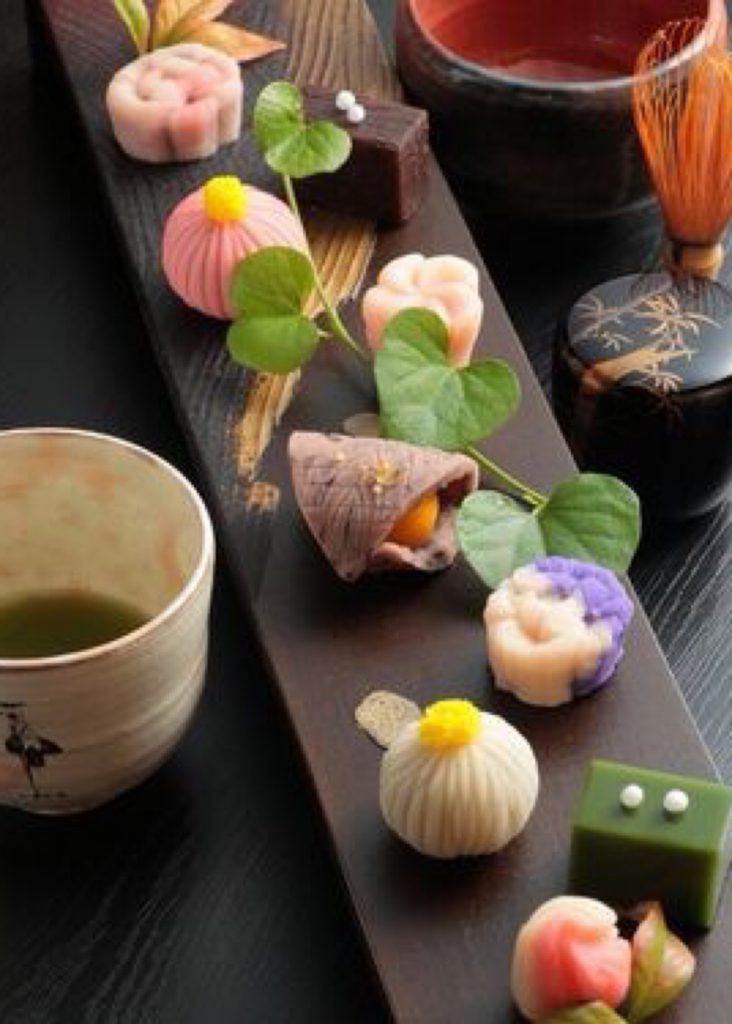
Speaking of tea ceremony, I have an image of Japanese sweets. Of course, since it is a tea ceremony, tea is the leading role and Japanese sweets are the supporting role. There are two types of tea at the tea ceremony: “light tea” and “dark tea”. Light tea is usually accompanied by “dried sweets”, and dark tea is usually served with “main sweets”. Examples of dried sweets include “Rakugan” and the main sweet is “Yokan”, but these Japanese sweets are too numerous to mention. Wherever you go in Japan, you will find local specialty Japanese sweets with their own names. There are many famous Japanese sweets in Kyoto, and they are known as “Kyogashi” or “Kyowagashi”. The Kyowagashi served at today’s tea party are too cute and beautiful, and the Kuromoji (sweets cut) won’t allow me to reach.
茶会といえば和菓子、ついそんなイメージを持ってしまいます。もちろん茶会ですから、お茶が主役で和菓子は脇役です。茶会のお茶には「薄茶」と「濃茶(こいちゃ)」があります。薄茶には「干菓子(ひがし)」、濃茶には「主菓子(おもがし)」が添えられるのが普通です。干菓子の例としては「落雁」、主菓子は「羊羹」といった物が挙げられますが、これら和菓子には枚挙に暇がありません。日本全国どこに行っても、その土地の名物和菓子があり、独自の名前が付いています。京都の名物和菓子も沢山ありますが、纏めて「京菓子」とか「京和菓子」と言うほど知られています。今日のお茶会に出された京菓子も、余りにも可愛くて、美しくて、黒文字(菓子切り)にもなかなか手が届きません。
